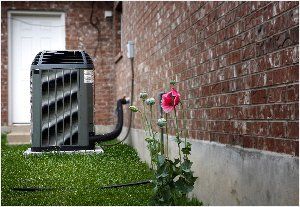My Blog
> Understanding Your Air Conditioner's Expansion Valve
Understanding Your Air Conditioner's Expansion Valve
Monday, July 2, 2018 7:50 PM

Your air conditioning system relies on numerous different components in order to keep you and your family comfortable during the heat of summer. Even homeowners with little knowledge of air conditioning mechanics recognize the names of such components as the compressor and the condenser. Few, however, are aware of the component known as the expansion valve.
Nonetheless, the expansion valve is one of the most crucial parts of an air conditioning system. Increasing your knowledge of this key part of your air conditioner will allow you to better identify problems before they reach critical proportions. Keep reading for an overview of the expansion valve and its role.
Cooling System Overview
Your air conditioner cools your home using heat-absorbing refrigerant. This refrigerant flows in a closed loop from the condenser unit in your yard to the evaporator coil in your home. The various components in your system manipulate the refrigerant in terms of its temperature and pressure, thus enabling it to absorb heat repeatedly.
The compressor increases the pressure of the gaseous refrigerant returning from the evaporator coil, which allows the refrigerant to more easily release its heat once it enters the condenser coil. As the refrigerant releases heat in its passage through the condenser coil, it goes back into its liquid state.
The liquid refrigerant flowing out of the condenser exists in a high-pressure, medium temperature state. At this point, it still isn't quite prepared to cool your home. In order to do that, its temperature will need to reduce even further. The expansion value reduces the temperature to where it needs to be.
Expansion Valve Function
To understand how the expansion valve works, you must realize that temperature and pressure have a direct relationship. Increasing the pressure of refrigerant also increases its temperature, literally packing its molecules more tightly together. This dual increase is exactly what happens as the refrigerant passes through the compressor.
The pressure-temperature relationship works in the opposite direction as well. In other words, by reducing the refrigerant's pressure, you can effectively cool the refrigerant off. The expansion valve accomplishes this task by restricting the flow of refrigerant into the evaporator coil.
Without the expansion valve, the refrigerant would rush into the evaporator coil without losing any of its pressure. The expansion valve permits only a small part of the refrigerant to enter the coil. As this refrigerant enters, it suddenly finds itself able to spread out in the relatively empty evaporator coil. This expansion causes its pressure to rapidly drop. The temperature drops right along with it.
Expansion Valve Problems
As far as air conditioning components go, expansion valves tend to be tough. As a result, they experience fewer problems than more delicate parts such as the compressor. Yet expansion valves have to withstand large amounts of pressure from the liquid line side.
Over time, this pressure can cause the expansion valve to break down. A failed expansion valve will no longer be capable of limiting the flow of refrigerant. Instead, excessive amounts of refrigerant may flow into the evaporator coil. The refrigerant won't experience the necessary temperature decrease, meaning your system won't be able to cool as efficiently.
On the other hand, the tiny diameter of an expansion valve means that it may also experience unwanted restrictions. Debris can become lodged inside of the valve, keeping refrigerant from passing through it at all. Such a restriction will prevent your system from cooling. It will also lead to refrigerant starvation on the suction side of the system. Compressor burnouts and other issues may soon arise.
The expansion valve plays a key role in the proper functioning of an air conditioning system. For more information about how to keep your expansion valve in good working order, reach out to the experts at A-1 Finchum Heating & Cooling.








